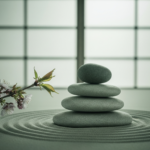We ran as fast as we could. I glanced up occasionally at the nurse straddling my patient, her blonde waves obscuring her face as she furiously attempted to restart a non-beating heart. We pushed the hospital bed down hallways and around corners, narrowly missing people-filled stretchers lining the Emergency Department. I stood in the back while the experts took over. If she was ready to leave this world, I wanted to be with her. As a palliative and hospice trained clinician, death and dying is my forte. Cardiopulmonary resuscitation, however, is not.
I took this job so I could be a more well-rounded practitioner. Having spent the majority of my nursing career with children, I felt more experience with the adult population would assist me in NP school and perhaps broaden my scope wherever I ended up afterwards. Truthfully, I needed flexible hours and in addition to a sign-on bonus, the offer included good benefits and more money per hour than I’ve seen in a long while. This is part of what’s broken in U.S. community-based palliative and hospice care settings; little to no reimbursement (especially for children) from government-funded programs such as Medicare and Medicaid leads to small salaries for people doing the work.
Recent budgetary cuts from the current administration will only make this worse, for adults and children alike. I’ve read about several hospice organizations who have already shuttered their doors due to financial restraints. I worry most about small towns and rural communities who already lack resources for supportive care during serious illness and at end-of-life. Big beautiful bill? For whom? Certainly not the country’s most vulnerable.
Being in the hospital again reminds me why I left. It’s more difficult now on an aging body than when I was younger, with the energy and stamina of a twenty-something. I’m no longer able to work multiple shifts in a row; two is all I can muster. “It’s temporary,” I tell myself. Studying and practicing palliative care brought humanity back into medicine for me. I fear I’ll lose it again, and so I do my best to find one good thing in every shift. This is more difficult on some days.
There are systemic and likely generational issues that trickle down into a puddle of disease, denial, mistrust, and addiction. And we, the nurses, are left to catch the contents. It feels like trying to mop up a monumental mess with a kitchen sponge. It never feels like enough. Mostly because we are told, daily, that it’s not enough. That we aren’t doing enough. That our scores aren’t high enough. And mainly, because we aren’t given the resources for it to actually be, enough.
I continued to watch as the team worked hard to save this woman’s life. One after one, people took turns compressing her chest. Finally, after what seemed like forever, someone announced they could feel a pulse. I returned to my post, shedding a few tears along the way. And I went on, like nothing ever happened. Because there are other patients waiting for their medications and breakfast trays. There are call lights that never end because someone can’t find their glasses. Again. Or because their cardiac monitor is beeping. Or because they don’t like their food. And there are those who come to us for help and decline to participate in their care. They put themselves, and us, in danger. I said as much as I gently guided a patient from an illegal, makeshift smoking area back to her room. She was so unsteady she could barely walk.
This goes on. For 13 hours.
I think if you asked any nurse why they chose this profession, they would tell you it’s because we genuinely want to help people. I look at the young nurses in my unit, fresh out of school. I’ve watched excitement slowly wane over time. To what, I don’t know. Fatigue? Disillusionment? Maybe both. Because in addition to the expectation we will provide excellent customer service, we’re also giving medications and performing specialty assessments. We respond to bed alarms and forgetful wanderers. We’re cleaning wounds and adult-sized bottoms. We’re checking lab results and double-checking orders because our licenses are at stake. And we’re constantly on guard for any clinical change that may signify a critical event.
We’re also repeatedly interrupted. Any number of health care workers arrest our care and conversations because they have a job to do as well. Something tells me there aren’t enough of them either. Our focus shifts, from task to person, as our patient’s family members too have questions, concerns and complaints. We do all of this without enough support or staff. A housekeeper called in sick? Nurses must clean their own rooms. Not enough techs? Nurses must transport their own patients. Not enough nurses? Nurses must care for more people. We do this most days without bathroom or meal breaks. Even though we are “encouraged” to utilize our allotted 30 minutes for lunch, we are rarely provided with coverage to do so.
Sometimes I fantasize about a one-on-one meeting with the powers that be. In my made-up story I give them advice on nurse retention. “It’s simple,” I tell the millionaires sitting across from me. “Lower patient to nurse ratios, hire more staff and distribute the wealth,” I say with imaginary authority. “Train your leaders well and often,” I add. And as I conclude, I produce scientific evidence to support my statement that, “decreased stress reduces nursing burnout, which leads to improved staff and patient safety and satisfaction.” And in my dreams, the nursing crisis is resolved. The national flatline shifts to healthy systemic change, and a profession is restored.
As I’m about to leave my shift, I hear an announcement for Code Blue. The same woman I cared for that morning was in cardiac arrest once again. I walked to her room and stood in the back, just in case. Once ventricular tachycardia morphed into sinus rhythm, I turned around and went home.
Amanda Dean is a palliative care nurse.


















![Sibling advice for surviving the medical school marathon [PODCAST]](https://kevinmd.com/wp-content/uploads/Design-1-190x100.jpg)



